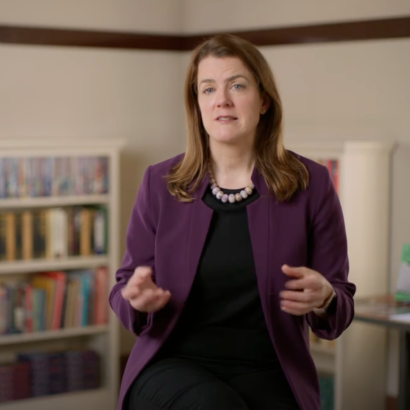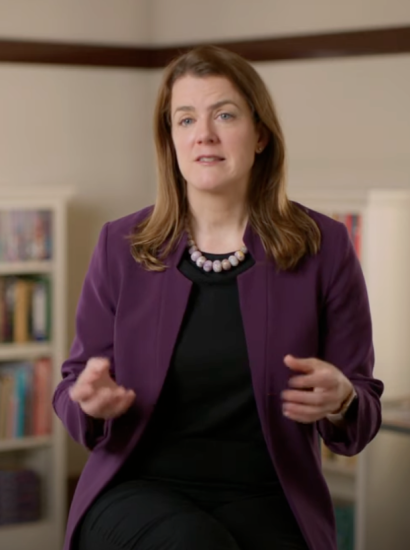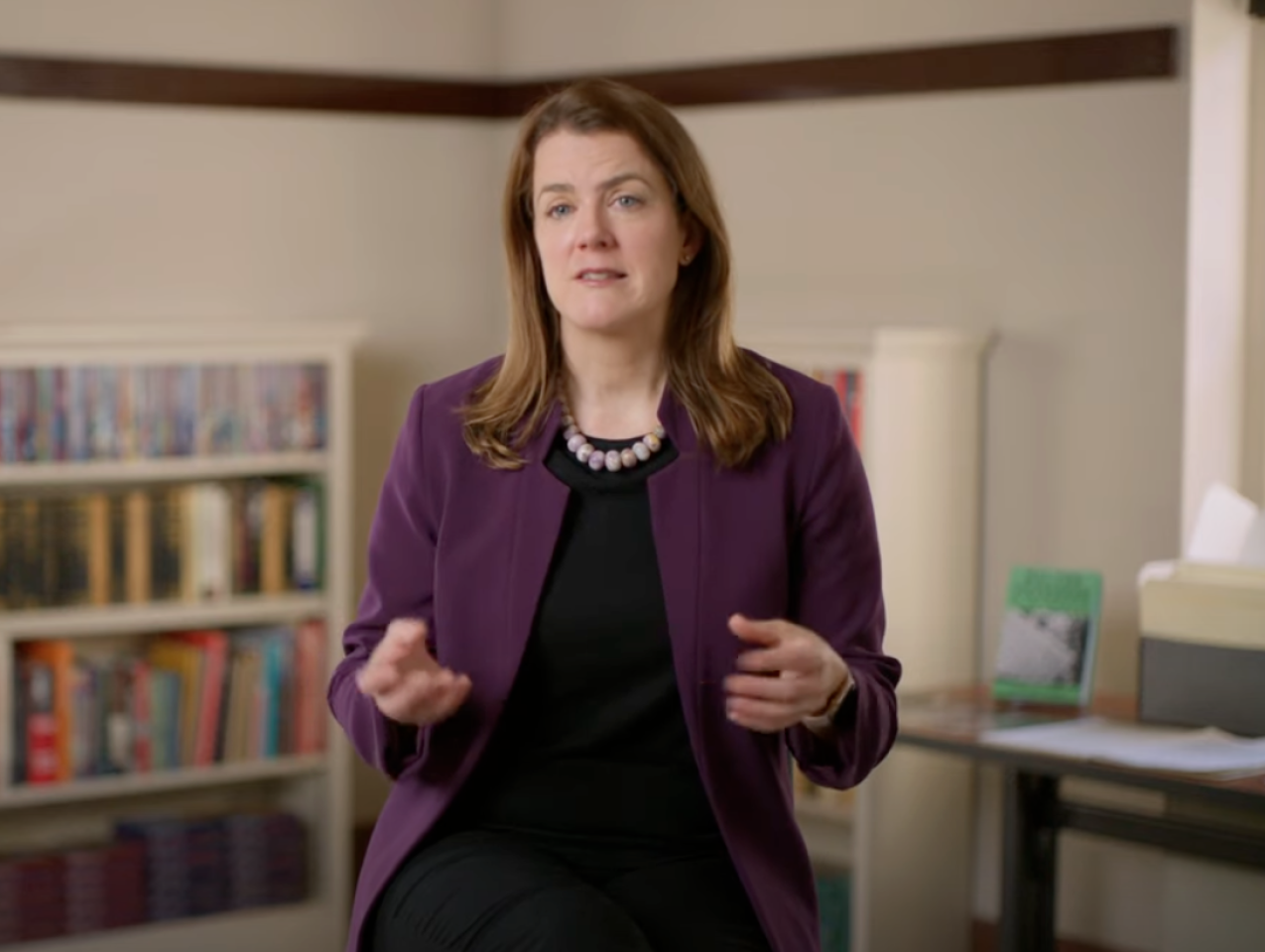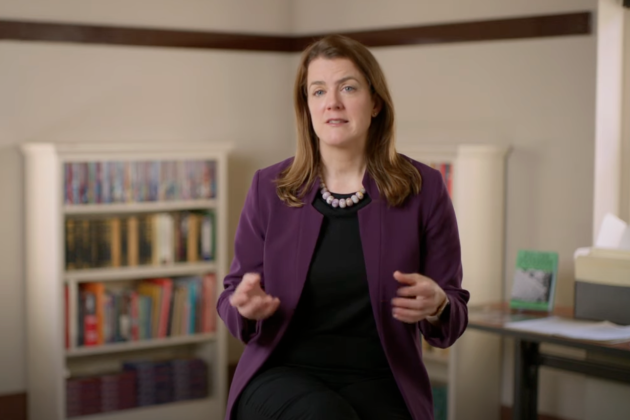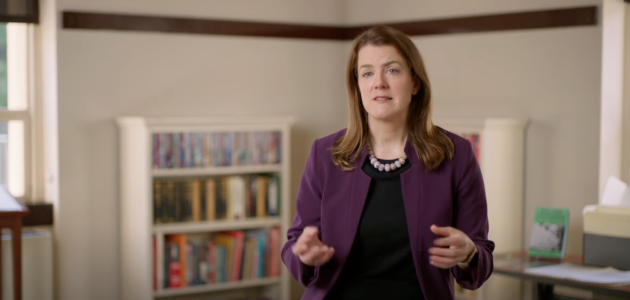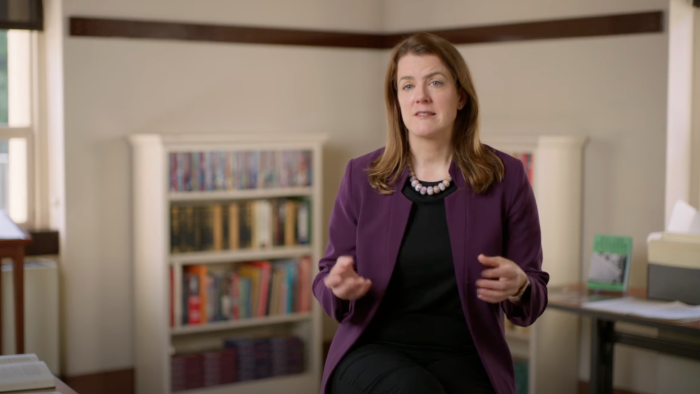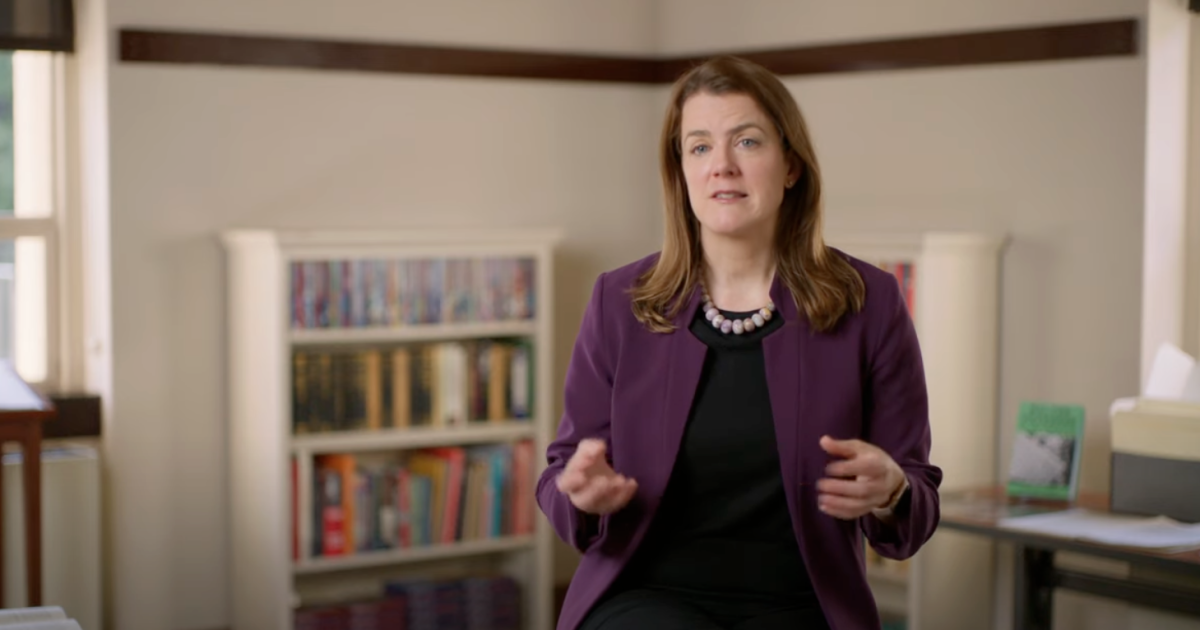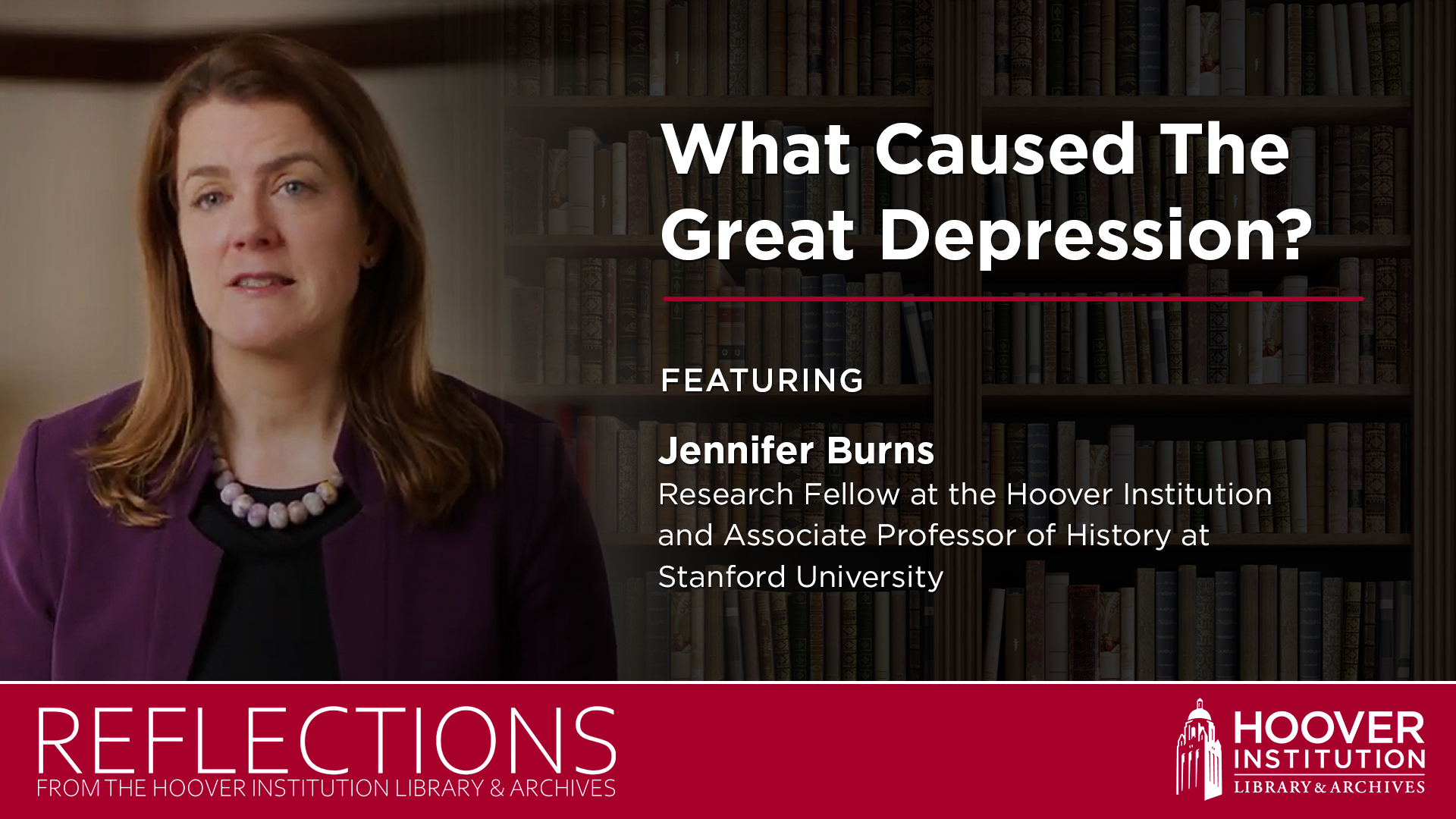Hoover research fellow Jennifer Burns reveals insights from Milton Friedman’s papers into what caused the Great Depression, including how Friedman’s quest to find the answer led him to a remarkable collaboration with economist Anna Schwartz. Their study, "A Monetary History of the United States," became the playbook for policymakers in times of economic crisis.
The Milton Friedman papers are housed at the Hoover Institution Library & Archives at Stanford University. Explore the finding aid for the collection here and the Milton Friedman Digital Collections here.
>> Jennifer Burns: The great finding of Milton Friedman and Ana Schwartz goes back to the Great Depression, which Friedman lived through. They saw one very clear thing, which was that the supply of money in the United States declined by a third during the Great Depression. That's not normal. Why was the Federal Reserve not intervening?
So you could learn a lot about Milton Friedman by looking at what he published. And you could find what he published anywhere. What you can only find in the archive, though, is how much work went into those publications. The real origin of a monetary history goes back to the Great Depression, which Friedman lived through.
And like all economists and just thinking people of his time, he wanted to know, why? Why did this happen? Why was the depression so long? Why was it so bad? And he had learned at the University of Chicago that the depression had something to do with money in banking.
That really it was a crisis in the banking system that then spread to the broader society. So he essentially made it his life's work to test this hypothesis and to look at what was happening with money during the course of the Great Depression. But that wasn't his only question.
What was happening with money during the Civil War, after the Civil War, in the 1920s, across the 1950s. And so that enabled him to see how unique the Great Depression was and to develop this argument about the collapse of the money supply during those years and to argue, that's really what made the depression so bad.
So what Friedman did is he launched a partnership with Ana Schwartz, and they decided, let's measure how much money there has been in the United States economy at various points in time. Pretty quickly, they developed this incredible working relationship. It's conducted mostly through letters. So in the archive, we can trace from the very first encounter, they have an exchange of letters in 1948 all the way through to the publication of the book and beyond.
And so they have a real partnership. Essentially Schwartz went to different banks and found out how much money they had in their vaults and started these big, long tables. I can see these long, legal sized papers. There's just stacks and stacks and stacks of them. They were literally adding up how much money there was.
As that picture came into view, they saw one very clear thing, which was that the supply of money in the United States declined by a third during the Great Depression. That's not normal. And so that led them to ask, why? What was the Central Bank doing? Why was the Federal Reserve not intervening?
Freeman felt that the Great Depression was in large part caused by the Federal Reserve's inaction. And this is really interesting, because we remember Friedman as someone who had a sort of hands off vision of what the government should do. In this particular instance, he looked at a government institution, the Federal Reserve, and said it needed to do more.
It had one job to do, which was destabilize the banking system, and it didn't do that. A monetary history of the United States is the playbook for what to do in an economic crisis. And that's how policymakers think today. That's why in any economic crisis, they rush to support banks, they rush to provide liquidity.
They do not wanna repeat the Great Depression, and they're enacting the lessons of Friedman and Schwartz when they do that.








